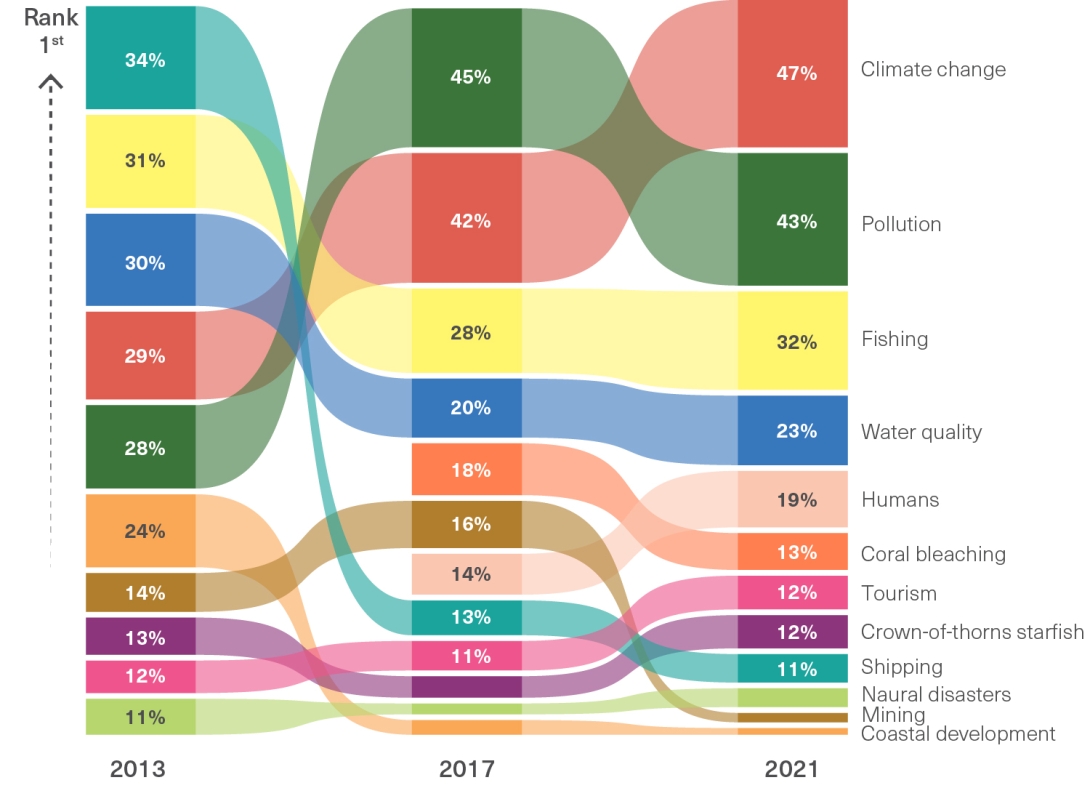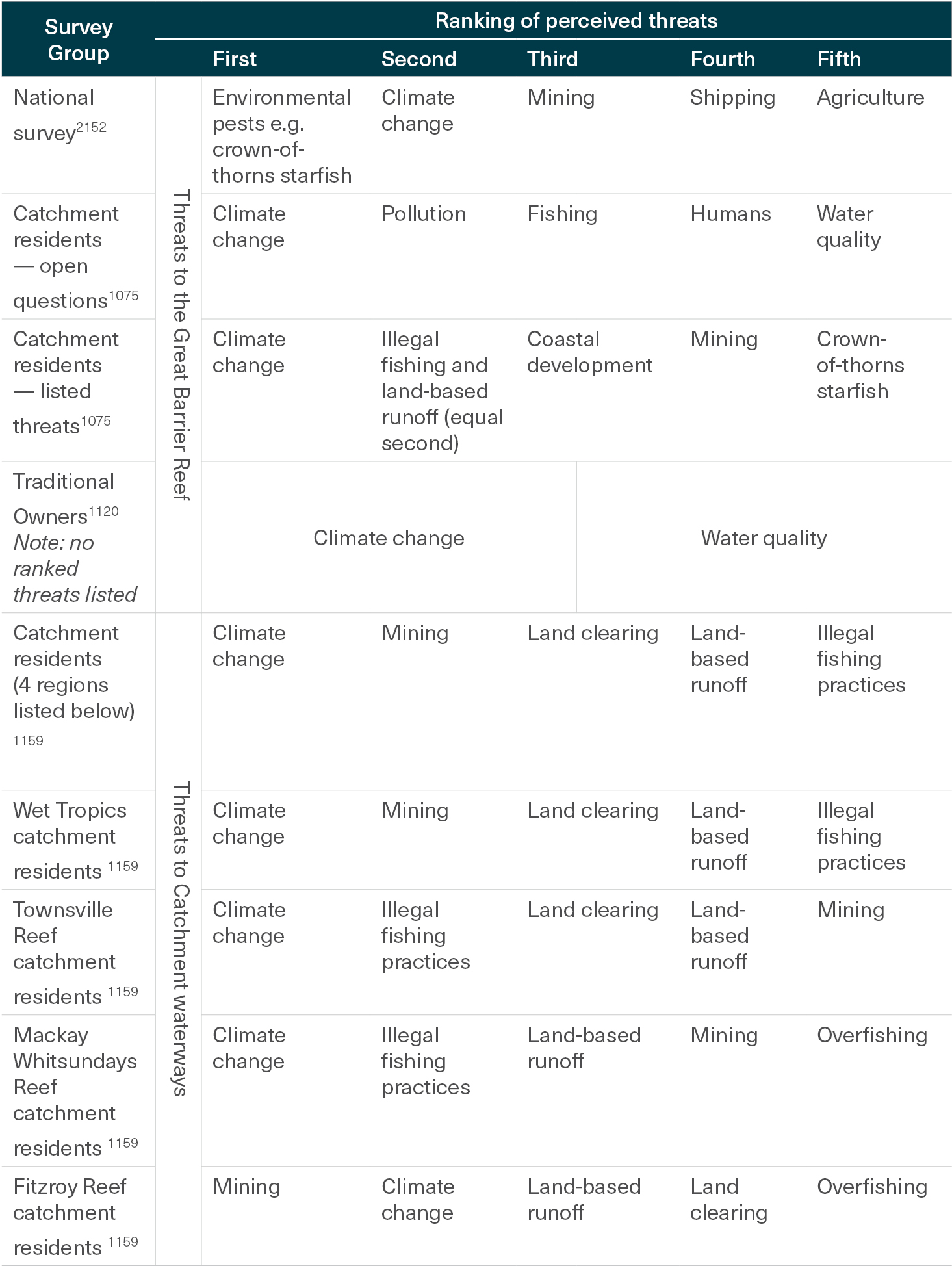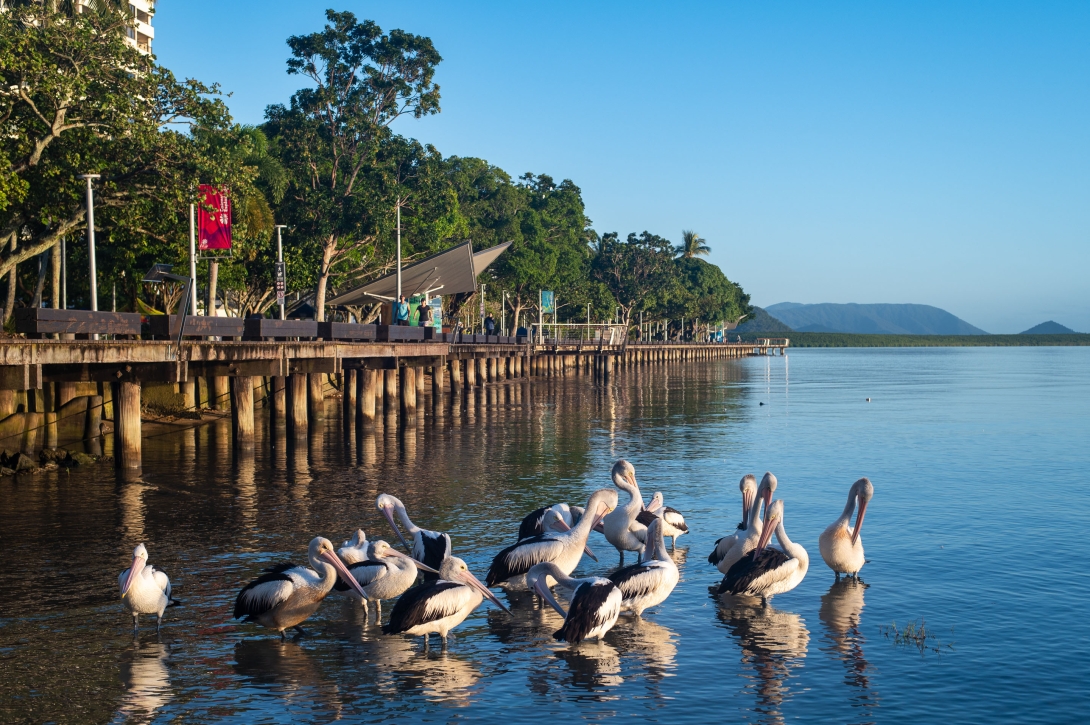Climate change is perceived by many in the community as the greatest threat to the Great Barrier Reef. This perception aligns with expert consensus that climate change is the most significant threat to the Reef. Catchment residents consistently perceive climate change, illegal fishing and land-based runoff as among the greatest threats to the Reef and Catchment waterways, although the results differ slightly between different catchments (Table 9.2).
The community views climate change as a serious threat to the Reef
Figure 9.1
Reef residents’ perception of threats to the Great Barrier Reef
These results, from the Social and Economic Long-Term Monitoring Program survey 2021, are in response to the open-ended question: ‘What do you think are the three most serious threats to the Great Barrier Reef?’ Source: Hobman et al. 2022 1075

Reef resident respondents recognised the seriousness of these threats to the Reef. Between 80 and 90 per cent of these respondents rated loss of coral cover, seagrass and mangroves, low abundance of fish, and poor coastal water quality as ‘moderate to big problems’.1075 Reef residents’ perceptions of threats to the Great Barrier Reef have changed through time (Figure 9.1). Threats perceived as the most serious by different stakeholder groups, such as commercial fishers, tourism operators and coastal residents, converged after the 2016 and 2017 mass bleaching events. Climate change became the most frequently reported threat by all stakeholder groups following the events, and perceptions of fishing and poor water quality as threats also ranked high.1074
The effects of climate change on the Great Barrier Reef have influenced Australians to view climate change more seriously.1532 However, in one national survey, Australian residents perceived environmental pests, such as crown-of-thorns-starfish, as a greater threat to the Reef than climate change.2153 This result possibly reflects an understanding of crown-of-thorns starfish as a direct and specific threat to the Reef and climate change as a more universal threat across multiple ecosystems.
Table 9.2
Community views on threats facing the Great Barrier Reef and catchment waterways
Views were canvassed using a variety of methods over different time periods and are not directly comparable (Table 9.1). To rank the seriousness of threats, some sources used a mean score derived from the Likert scale while others used only the highest-scored, most-serious threats. The top five threats in this table are a subset of all threats listed in the different methods and reflect the ranking method used in each different survey. These results from the various surveys represent the views of respondents from different postcodes and not necessarily specific community sectors.




